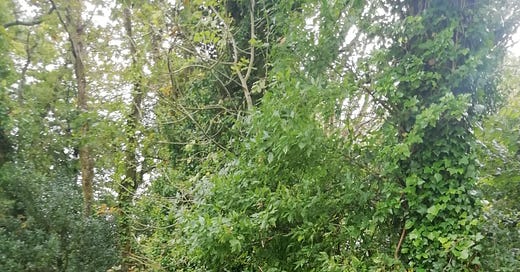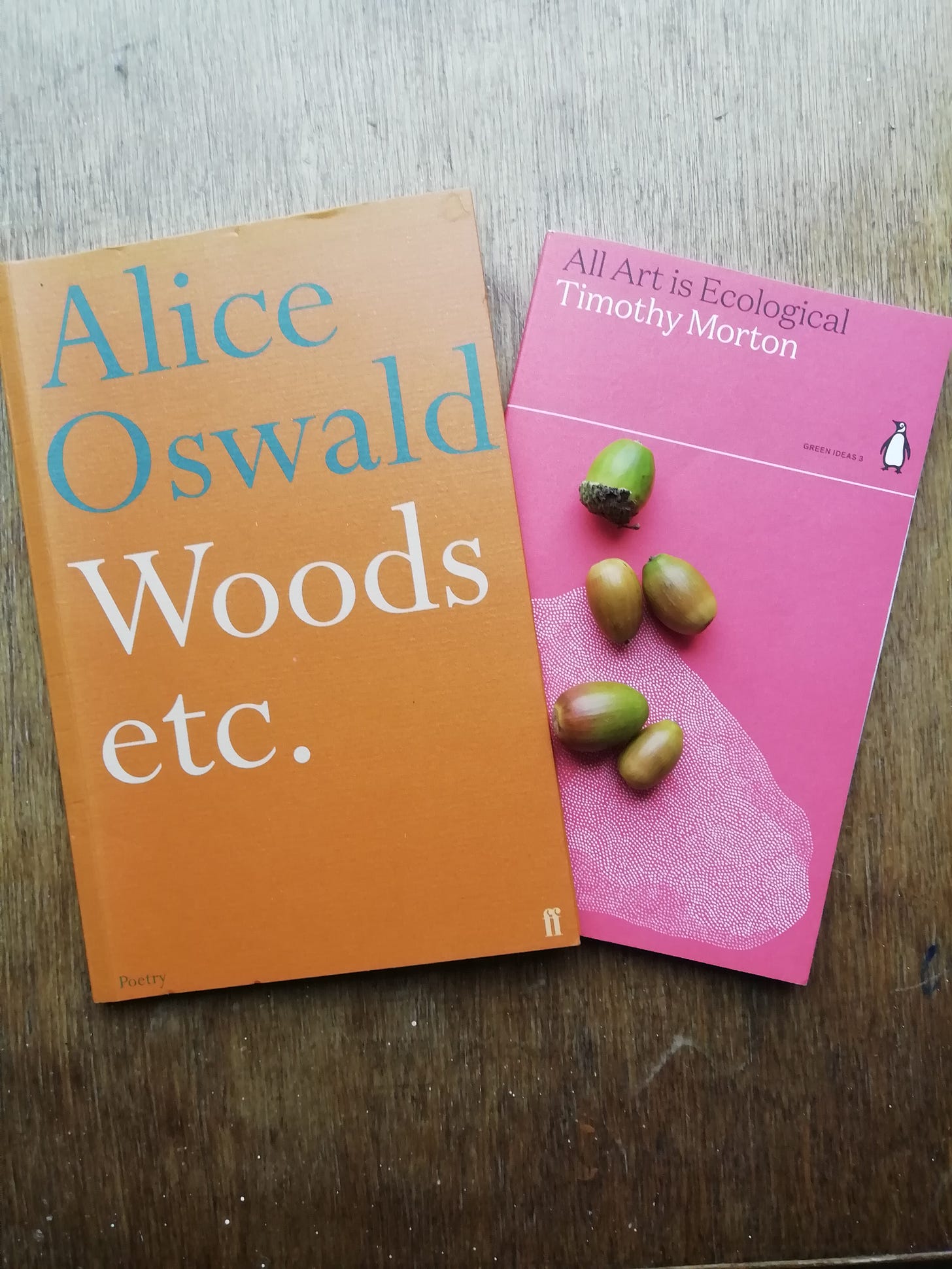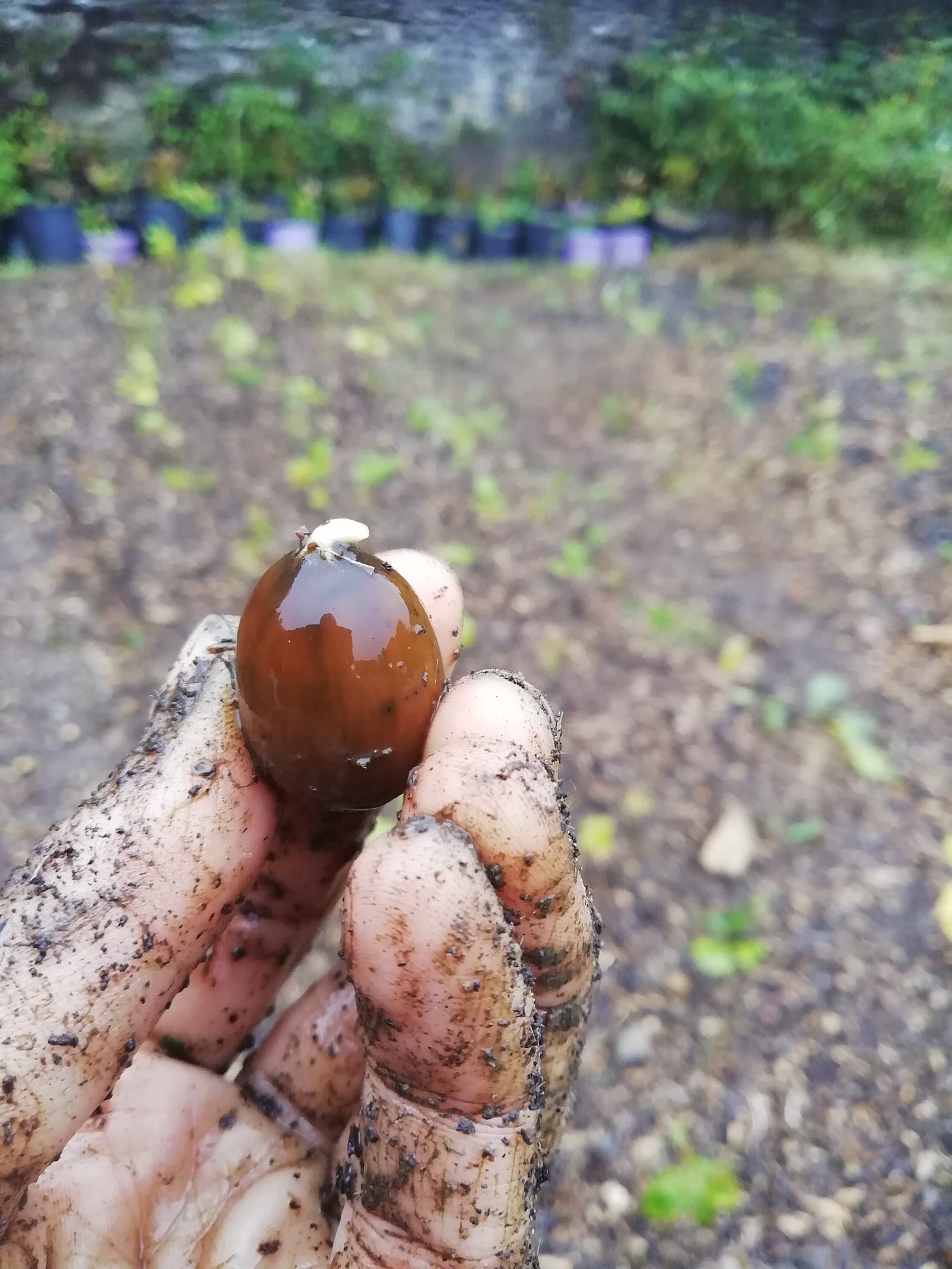Visiting|Spindle
On Thursday Susan Montgomery came to visit the nursery. It didn't seem very hospitable, but we were awarded a gap at the start of the day. We set out with buckets across the lawn, over the wires and down into the belly of the field. We hugged the treeline until the sodden grass couldn't hold us no more. Hopping onto islets of clumps, we navigated a nitrogen green archipelago until we came within the vicinity of the spindle. I have mentioned this particular spindle before, it being the only one which seems to have grown on its own accord within the bounds of CECAS site. Thanks to having more knowledge of its features it wasn't very difficult to find. It's bark is very distinct.
The stark contrast between one world and another was so apparent on either side of the wire. The permaculture principle "use and value the marginal" comes to mind when considering this contrast more deeply. Where the spindle was it seemed to be happy, tucked in under an oak. Their were many other plants and signs of life and sounds; seasonal material dropping from tress, animals scurrying and birds getting on with their own business. Everything was tucked inside and around something else, everything was getting on with its own business. On the other side of the wire the compacted compartmentalised earth held a layer of grass, getting on with its business too, it was however, not half as exciting. These grassy vistas evade time and so don't do much for the human imagination, except perhaps serve as a conceptual blank canvas. So "use and value the marginal" serves as a conceptual framework in this circumstance, as I pictured the marginal area and its contents pioneering out over the wire encompassing the field. I imagined other species placemaking too, as Mark had described a few weeks earlier, willow and alder perhaps occupying the lower ground as the field once again becomes animate with water. The natural topography of the field wants water, it holds water running underground.
So, their is one spindle, on the edge of what is and what could be. Visiting is spending time and spending time with this one is definitely worth while. It's berries were not ready yet, but its good to check in. And to keep checking in throughout the seasons, making sure its doing alright.
We then went on into the woods. We read Alice Oswalds Woods etc. from her book Woods etc. aloud. We read it twice, and spoke it under a big sessile oak. We talked about poetry and how it can set pace. We talked about the pace of the woods and the pace of working. Susan, who is a painter talked about words and how they layer well with her process. She went on to talk about her recent work with Periphery Space peripheriesPOST | MATTERS OF TABLE | 2023 — PERIPHERY.SPACE. More on Susan and her work here Susan Montgomery
We visited the hazel and we visited the oak. We collected a few sessile oak nuts near the octagon on the estuary.
We walked back up along the track and made our way to the nursery to then say goodbyes.
I decided to go back up to the nursery in the evening and got caught in a heavy shower. It was actually quiet amazing and I was glad of the new rain gear I'd acquired, which now makes me feel well equipt for these wet winters. I propagated more yew, this time mixing potting compost with soil. And then I put a layer on the new compost around the yew from last week. I put some acorns into a pot with soil and covered with some leaf litter. Hopefully some will sprout and we can pot them on this coming week. This one is very eager and is already in a pot of its own. What freaking joy!
Aside from the Alice Oswald text I have printed a Timothy Morton text, just to really send us into outer space, its an extract called Ecology without Nature from his book All Art is Ecological. You will find it on the table in the hallway, as per usual.
See you next week 11-1, friends welcome!







